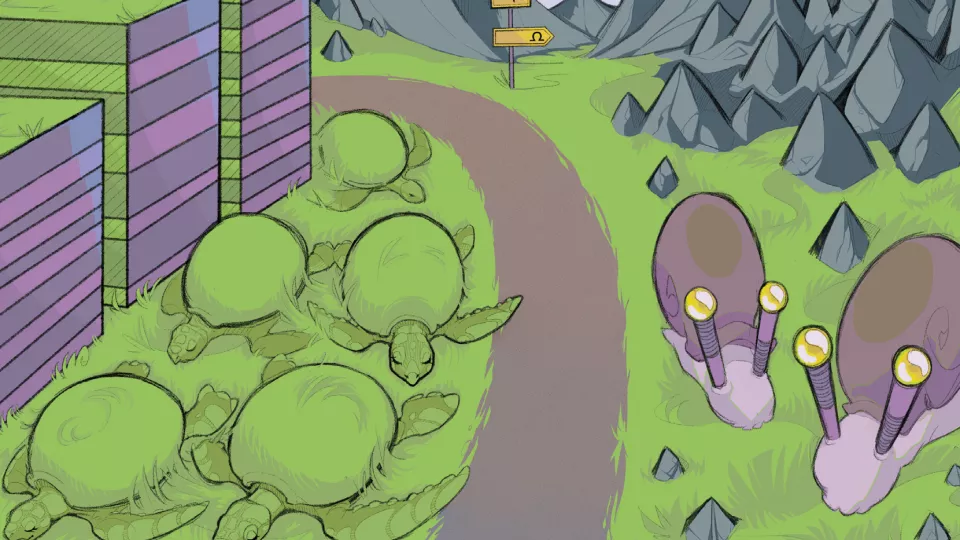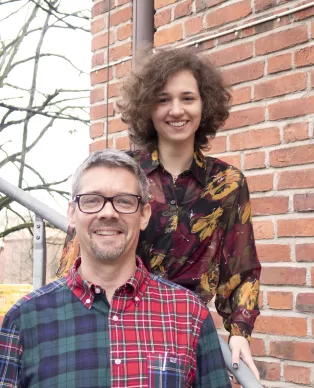Jonas has written a scientific article about his new findings in materials science. In the article, he shows new understanding of how to combine different materials in so-called heterostructures.
"This method of building materials is well proven. It involves combining different materials with each other. If it is possible to produce one material on top of another, resulting in a smooth two-dimensional surface, it is usually not possible to achieve similar results if the materials are deposited in reverse order. This results in three-dimensional structures instead. By taking certain experimental parameters into account, I show where the boundary is between such two- and three-dimensional production," says Jonas.
"Jonas contacted me and asked if I wanted to do an illustration for his article," says Anastasia Tsioki. She is in her first year of the engineering programme in technical nanoscience at LTH, where Jonas is programme manager and teacher. In high school, she took a science programme with a focus on design.
"I like working with shape and colour. First I read the abstract and Jonas also explained and then I started from what we had talked about", says Anastasia Tsioki.
Anastasia's image is basically a diagram. It shows a two-dimensional plant on the left and a three-dimensional plant on the right. In the centre of the image is a path. Two snails, with antennae that are supposed to be associated with nanowires, are crawling along the right side of the path. In the background on the right are pointed rocks and mountains that continually grow larger and rise into the blue sky, meant to illustrate three-dimensional growth.
To the left of the path are double lines of sea turtles, with striped skyscrapers in the background. Or maybe it's confection, with layers of different colours?
-The turtles were my own idea and may not have much to do with the content of Jonas' article. It's fun to make your own interpretation," says Anastasia.
The confection, or skyscrapers, are intended to illustrate two-dimensional growth, where different materials are deposited in layers, one on top of the other. In the article, Jonas shows that depositing two different materials can lead to completely different results, depending on the order in which the materials are deposited.
The fact that the scientific journal immediately chose to use the submitted illustration as the cover image is unusual, but Jonas is not surprised that Anastasia succeeded in this endeavour.
"The result was absolutely superb", says Jonas Johansson.
Jonas Johansson's article "Heteroepitaxial growth modes revisited" in the journal CrystEngComm.
Jonas Johansson's profile in Lund University's research portal.



